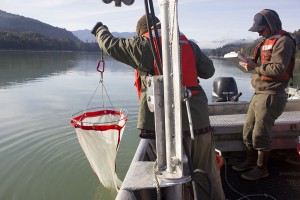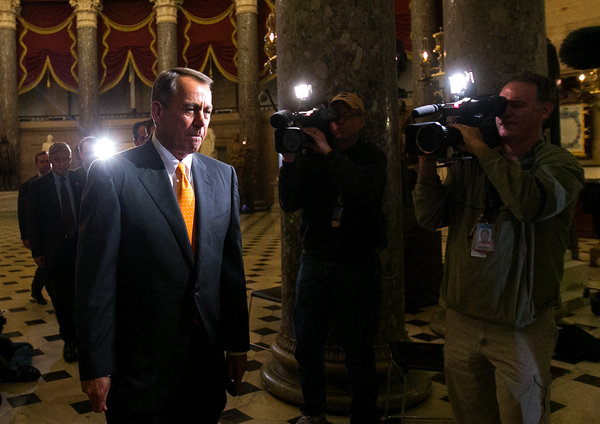
By Kevin Zeese and Margaret Flowers, TruthOut
On Monday, October 7, 2013, indigenous nations and their allies held 70 actions throughout the world proclaiming their sovereignty. The call to action was issued by Idle No more and Defenders of the Land to coincide with the 250th anniversary of the British Royal Proclamation of 1763, which was the first document in which an imperial nation recognized indigenous sovereignty and their right to self-determination. As we wrote last week, treaties with First Nations are not being honored, and even the United Nations Declaration on the Rights of Indigenous Peoples does not adequately recognize the sovereignty of indigenous peoples.
In Canada, where the Idle No More movement was founded, an attack is being waged by the Harper government on the rights of the First Nations. A bill referred to as C-45 weakens laws that protect the land and allows transnational corporations to extract resources from First Nations’ lands without their consent. Idle No More was founded on December 10, 2012 (the anniversary of the Universal Declaration of Human Rights), when Chief Theresa Spence began a hunger strike to protest C-45 on an island across from the Canadian Parliament.
The Idle No More (INM) movement has grown exponentially during the past year to become a worldwide movement. At its core, the INM taps into issues that are essential to all people. INM is a struggle against transnational corporations that collude with governments to allow the exploitation of people and the planet for profit, and it is a struggle for a new economic paradigm. INM is also about facing up to the horrific history of the way that colonizers have abused and disrespected indigenous peoples so that there can be reconciliation and justice and so that the peoples of the world can coexist peacefully. And INM is about the recognition that indigenous peoples are stewards of the Earth and must lead the way to protect the Earth and teach others to do the same.
Throughout the year, there have been teach-ins, round dances, flash mobs and rallies to raise awareness of the ongoing racist and exploitative treatment of indigenous nations as well as the continued decimation of their land to extract resources. There have been long walks, rides and canoe trips to call for healing of the Earth and for the recognition of indigenous sovereignty. And there have been blockades and other nonviolent direct actions to stop further degradation of the planet. INM has already achieved some successes.
Idle No More is an indigenous-led movement, but it is not a movement exclusive to indigenous people. As Clayton Thomas-Muller, an organizer with Defenders of the Land and Idle No More, states, “We understand that the rise of the native rights-based strategic framework as an effective legal strategy supported by a social movement strategic framework is the last best effort not just for Indigenous People but for all Canadians and Americans to protect the commons … from the for-profit agenda of the neoliberal free market strategists that have taken over our governments … and indigenous peoples have been thrust into the forefront of global social movements not just because of our connection to the sacredness of Mother Earth and our traditional ecological knowledge and understanding of how to take care of the Earth as part of that sacred circle of life but also because our ancestors … made sure we had the legal instruments to be able to confront the enemies of today and that is what Idle No More is doing in the US and Canada and across the world where Indigenous People continue to live under occupation and oppression.”
Sovereignty is Fundamental in the Struggle for Global Justice
The United States and Canada are two of the wealthiest nations in the world. Much of this wealth comes from the extraction of resources on land that belongs by treaty to Native Indians. Rather than honoring these treaties, the governments of the US and Canada have a long history, which continues today, of using laws and even manipulating the process of creating the UN Declaration on the Rights of Indigenous Peoples to exterminate indigenous sovereignty.
As the extraction of resources becomes more extreme through processes such as hydro-fracking and tar sands excavation and the serious consequences this has on the health of people and the Earth become more apparent, indigenous nations have realized that their struggle for sovereignty must intensify. The INM movement is one manifestation of this effort.
One of the six core demands of the INM movement is to “Honour the spirit and intent of the historic Treaties. Officially repudiate the racist Doctrine of Discovery and the Doctrine of Terra Nullius, and abandon their use to justify the seizure of Indigenous Nations lands and wealth.” This is a particularly appropriate time to reflect on these doctrines as some in the United States celebrate Columbus Day.
Columbus used the Doctrine of Conquest to legitimize seizure of land in the Americas. This doctrine “grants invaders legal title to the lands they conquer.” Additionally, the Doctrine of Discovery from the early 1800s allowed colonizers to occupy and claim title to any lands, and their resources, that were not part of the European Christian monarchy. And the Doctrine of Terra Nullius similarly permitted colonizers to occupy and claim land that was not settled according to European standards, such as having an established township.
These doctrines continue today. The Doctrine of Discovery was codified into law by the Supreme Court decision of Johnson v. McIntosh in 1823, which left Native Indians “with the mere ‘right’ to occupy their ancestral lands, subject to U.S. dominion.” And so it is that Native Indians are subjected to policies that continue to allow corporations to extract resources and poison the air, land and water without their consent.
Although the INM movement began in Canada, it has also taken off in the US. And solidarity between Indian Nations in the US and Canada is developing. This summer, the Dakota Nation Unity Ride from Manitoba met up with the Two Row Wampum Renewal Campaign canoe trip in Woodstock, New York, to travel together to the United Nations in New York City. Two Row Wampum is the oldest treaty in North America between an Indian nation, the Haudenosaunee, and a European nation. This summer marked the 400th anniversary, which they highlighted with an epic canoe trip down the Hudson River.
The Two Row Wampum treaty ”outlines a mutual, three-part commitment to friendship, peace between peoples, and living in parallel forever (as long as the grass is green, as long as the rivers flow downhill and as long as the sun rises in the east and sets in the west).” The Two Row Wampum campaign seeks to uphold the treaty by creating friendship and peace between all peoples and by working together for a sustainable future, as outlined in their campaign goals. They seek recognition of their laws, the right to self-determination, including living in accordance with their culture and laws, and to be leaders in restoration and stewardship of the Earth.
The Dakota Unity Ride and the Two Row Wampum canoe trip landed in New York City on August 9, which is the International Day of the World’s Indigenous Peoples. They walked together to the United Nations building, where they met with UN Secretary-General Ban Ki-moon, representatives of the UN Permanent Forum on Indigenous Issues and other officials. The UN press statement describes the theme of the meeting as “Indigenous peoples building alliances: honouring treaties, agreements and other constructive arrangements.”
This is a positive step, but the fight for sovereignty continues. Sylvia Mcadam, a founder of Idle No More and a professor and author, teaches that sovereignty includes “land, language and culture.” It is not just land that has been taken from indigenous peoples but also their language and culture through the forced attendance at residential schools and barriers to access their traditional foods. Mcadam states that her involvement in Idle No More began when she returned to her traditional land with her parents to do research for her current book. She was shocked to see how the land had been developed without consent of the people.
Mcadam reminds us that the First Nations are not a lawless people but that theCreator’s Laws are “expressed in everything we do.” Colonizers have a lot to learn from Native Indians – not only about caring for the Earth and living in ways that preserve resources for future generations but also about governance. Native Indians are matriarchal societies that practice deep democracy.
While indigenous people describe themselves as people who follow laws, they have suffered injustice on their lands. Last week, a panel of judges at the International Peoples Tribunal on Leonard Peltier issued an executive summary and preliminary findings following three days of testimony from Native Indians who described abuse inflicted by the US government and FBI agents. The tribunal concluded that US laws must be changed in order for FBI agents to be charged for their crimes of assault and murder on Pine Ridge Indian land in South Dakota and elsewhere. Further, the tribunal said justice is dependent on the immediate release of Leonard Peltier.
Non-indigenous groups are working in solidarity with Idle No More and other indigenous groups. For example, the Two Row Wampum campaign, led by the Onondaga Nation, works with Neighbors of the Onondaga Nation. This collaboration is particularly evident in the environmental movement.
Stewardship of the Land, Air and Water
Central to the Idle No More movement is protection of the land, air and water from corporations that steal resources without any regard for the environmental effects. Indigenous Peoples believe that many harmful substances, such as uranium and oils and gases, were put in the ground because they were meant to stay there. They oppose the extreme methods of extraction being used today.
During the past year, often with leadership from indigenous nations, the environmental movements in the US and Canada (and elsewhere around the world) have escalated their tactics to protect the Earth. Their focus has primarily been on stopping the pipelines that carry bitumen from the Alberta Tar Sands and stopping fracking for oil and gas. Throughout the summer, there were numerous direct action campaigns, including Sovereignty Summer and Fearless Summer, which collaborated to blockade roads and equipment to prevent pipeline construction.
We highlight three active campaigns that are being led by indigenous nations: The Red Nation’s efforts against an Enbridge pipeline, the Nez Perce fight to stop Megaloads from carrying humongous pieces of equipment through their lands and the Mi’kmaq Warrior Society, which evicted a fracking company, SWN Resources, from its land.
On February 28, Marty Cobenais from the Indigenous Environmental Network ledthe beginning of an occupation, which included building a sacred fire on top of a pipeline that runs across Red Lake Tribal land in Leonard, Minnesota. The pipeline carries bitumen from the Alberta Tar Sands, which is being mined and poisoning the land of the Athabasca Chipewyan First Nation in Canada without their consent. The pipeline is owned by Enbridge, and the Red Lake tribal members say that it is illegal. They understood that there was a requirement that if there were a permanent structure over the pipeline it would have to be shut down. Unfortunately, that has not happened, and in fact the Minnesota Public Utilities Commission voted unanimously this summer to allow the pipeline to be expanded to carry more tar sands bitumen even though hundreds attended the hearing in opposition to it.
The occupation is ongoing and is being supported by indigenous and non-indigenous environmental organizations. In October 2013, Winona LaDuke and the Indigo Girls led a weeklong Honour the Earth horseback ride along the route of the pipeline to raise awareness. They are very concerned about spills from the pipeline, which are inevitable. Enbridge has a poor safety record.
Spills have occurred already. In 2002, 48,000 gallons spilled near Cass Lake, Minnesota, and continues to pollute the water table. In 2010, more than 800,000 gallons spilled into the Kalamazoo River in Michigan, and nearly 300,000 gallons remain today. And last year, 50,000 gallons spilled near Grand Marsh, Wisconsin. The pipeline runs through the Straits of Mackinac, which connect Lakes Huron and Michigan, and so it threatens to contaminate large supplies of fresh water.
A very similar battle is occurring between the Yinka Dene Alliance in British Columbia and Enbridge. There the Yinka Dene is accusing the British Columbia government of violating international law by issuing permits to Enbridge Inc. for drilling and tree removal in their territories along the proposed path for the Northern Gateway pipeline, despite their opposition and the lack of consultation on the proposed pipeline. They made the accusations in a 15-page submission to the UN Special Rapporteur on the Rights of Indigenous Peoples.
Although the fight against Enbridge and the governments that collude with them have not made much progress, the Nez Perce in Idaho have won a significant victory. Last month a judge ordered the prohibition on the use of 100 miles of roadways through tribal lands to transport huge pieces of equipment, called Megaloads, made by General Electric that are used in extracting Canadian tar sands.
Tribal members filed a court case in August to prevent the Megaloads from crossing their land, something that is already illegal but wasn’t being enforced. They also blockaded the road in August to prevent passage of a Megaload. During the four-day blockade, eight of nine Nez Perce Tribal Council leaders were arrested.
The judge’s decision suspends the passage of Megaloads for now and may be lifted after an impact study is completed. However, another significant aspect of this decision is that the Nez Perce Tribal Council must be involved in future decisions to permit the Megaloads to use roads through their lands.
Another active occupation to protect tribal land is in New Brunswick, where the Elsipogtog have been taking action for months to stop a Houston-based company, SWN Resources, from exploring their land to begin fracking. Tribal members blockaded SWN work trucks throughout the early summer to prevent them from testing the land for potential fracking. In addition to blockading, some of SWN’s equipment was destroyed.
There was a temporary peace beginning in late July, when SWN Resources agreed to leave for the summer. Negotiations at that time included dropping charges against 25 of the 35 people who had been arrested. SWN did say it expected to return in September.
When SWN Resources recently attempted to return, it was met with an eviction notice and another blockade, which included a sacred fire. The Elsipogtog First Nation and Mi’kmaq Warrior Society contend that the land being explored was supposed to be held in trust for them but that the Canadian government has done such a poor job of caring for the land that the tribes are concerned whether the land will be able to support them. Along with the eviction notice, they are claiming sovereignty over the land and their responsibility to care for it.
On October 7, in solidarity with the days of action to proclaim indigenous sovereignty, activists in Houston delivered an eviction notice from the Elsipogtog to the office of SWN Resources. Office staff members refused to accept the letter, so it was left on the receptionist’s desk and copies were faxed directly to the office. The letter requested a response within 48 hours.
At present, the blockade continues. Some of the chiefs met with David Alward, premier of New Brunswick, but the talks have not been satisfactory. Alward would not allow members of the Mi’kmaq Warrior Society to attend the meetings. The Mi’kmaq Warrior Society is calling for solidarity actions October 18, when they expect SWN to serve a court injunction. The blockade has brought together tremendous support from the surrounding community and tribes across Canada.
Moving Toward Peace and a Healthy Planet for Future Generations
Also on October 7, members of Veterans for Peace and their allies held a ceremony in the Vietnam Veterans’ Memorial in New York City to mark the 12th anniversary of the US invasion of Afghanistan and to oppose all wars. As they did last year, the veterans read the names of those who were killed in wars and laid flowers at the base of the memorial. However, this year, the organizer, Tarak Kauff, began the ceremony by recognizing the 500-year war against First Nations and read the names of Native Indian warriors who were killed.
A shift seems to be happening in public awareness of the ongoing effects of colonialism on indigenous peoples and the importance of indigenous leadership in the struggle to heal and protect the Earth. During the past year, the indigenous-led movement in collaboration with non-indigenous allies has grown, and the tactics being employed to protect the land from extreme energy extraction have escalated.
Just as we must abolish imperialism abroad, we must also end it at home. To accomplish this, we must begin by understanding the ongoing 500-year war against Native Indians, and we must begin to speak about it. The Idle No More and other indigenous-led movements seek a peaceful solution that recognizes the sovereignty of indigenous peoples and their laws so that everyone can live in peace. And they understand that if we are to end the practices that are destroying the Earth, we must learn from those who are stewards of the Earth.
It is time for all of us to be Idle No More. We face common opponents – corporations that profit by exploiting people and the planet and the governments who collude with them. The Trans-Pacific Partnership, currently being negotiated, continues this global exploitation of the planet and people by transnational corporate interests. It is time to end imperialism and the neoliberal economic agenda that perpetuates this destructive behavior.
It is time for solidarity, cooperation, reconciliation and restoration of peaceful human relationships and the land, air and water. It is imperative that we act now so our children and future generations will have the opportunity for healthy lives. The future is literally in our hands.






























